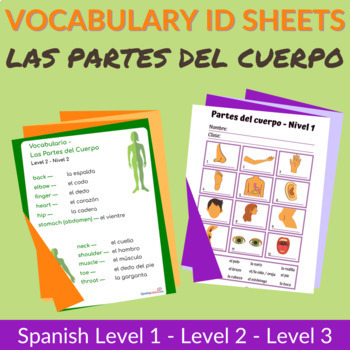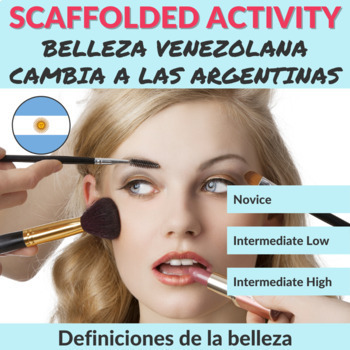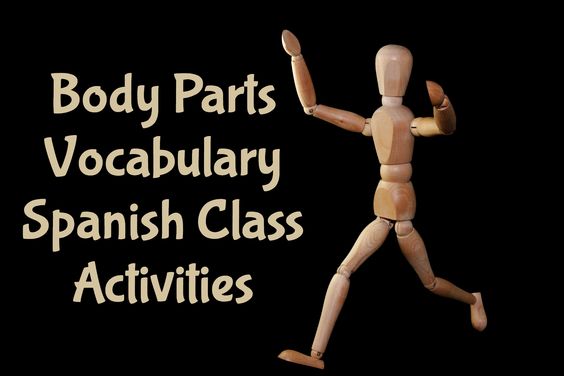
When teaching Spanish as a second language, the introduction of body parts vocabulary typically occurs in the early stages of learning, usually in beginner or elementary-level classes. This is because the vocabulary related to body parts is relatively simple and frequently used, making it an essential part of basic Spanish language acquisition.
Generally, students are introduced to the basic vocabulary of body parts in the first few weeks or months of the school year. This includes learning common words for body parts such as cabeza (head), brazo (arm), pierna (leg), mano (hand), pie (foot), ojo (eye), and boca (mouth).
As the student progresses through the language curriculum, they may learn more specialized vocabulary related to body parts, such as internal organs and symptoms, but these are typically introduced at higher levels of study.
Health and Body Parts Vocabulary in Spanish Lesson Plans
 Body Parts and Health Vocabulary – DOLER and Indirect Object Pronouns Lesson Plan for Spanish 1 – At the end of this activity, students will have reviewed and used parts of the body and specific health vocabulary. Students will also review and use indirect objects to talk about feeling sick.
Body Parts and Health Vocabulary – DOLER and Indirect Object Pronouns Lesson Plan for Spanish 1 – At the end of this activity, students will have reviewed and used parts of the body and specific health vocabulary. Students will also review and use indirect objects to talk about feeling sick.
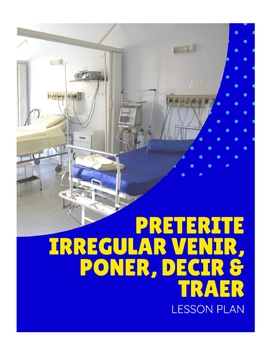 Preterite Irregular of VENIR, PONER, DECIR and TRAER – Accidents, Body Parts and Emergency Room Lesson Plan for Spanish 2 – Students review the body parts vocabulary and the verbs “venir”, “poner”, “decir”, and, “traer” in the preterite. Students do an oral practice where they speak about a time, they had to go to the emergency room.
Preterite Irregular of VENIR, PONER, DECIR and TRAER – Accidents, Body Parts and Emergency Room Lesson Plan for Spanish 2 – Students review the body parts vocabulary and the verbs “venir”, “poner”, “decir”, and, “traer” in the preterite. Students do an oral practice where they speak about a time, they had to go to the emergency room.
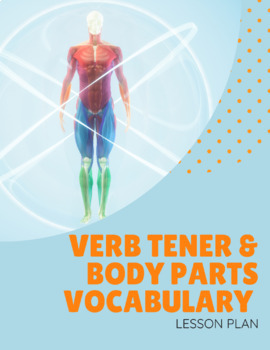 Verb TENER and Body Parts Vocabulary Lesson Plan for Spanish 2 – Students learn body parts vocabulary and the forms of the verb “tener” in the present. They also learn the verb “doler” and how to speak about pain and how to express several symptoms.
Verb TENER and Body Parts Vocabulary Lesson Plan for Spanish 2 – Students learn body parts vocabulary and the forms of the verb “tener” in the present. They also learn the verb “doler” and how to speak about pain and how to express several symptoms.
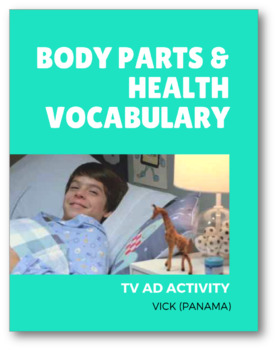 TV Ad Vicks: Tu Medicina Para El Resfriado – Body Parts and Health Vocabulary Lesson Plan for Spanish 1 – Students learn about the body parts and symptoms from this authentic TV commercial from Latin America. Students also learn about the product Vicks in Latin culture. The activity uses the Integrated Performance Assessment (IPA) format.
TV Ad Vicks: Tu Medicina Para El Resfriado – Body Parts and Health Vocabulary Lesson Plan for Spanish 1 – Students learn about the body parts and symptoms from this authentic TV commercial from Latin America. Students also learn about the product Vicks in Latin culture. The activity uses the Integrated Performance Assessment (IPA) format.
Lista de vocabulario y hojas de práctica: Las Partes del Cuerpo
Help your Spanish 1, Spanish 2, and Spanish 3 students learn and practice vocabulary in Spanish with this set of printables that includes:
- Teacher’s Vocabulary Master List – The suggested vocabulary that your students can manage organized by level and the links to copy the student Vocabulary List Handouts and the student Practice Worksheets (ID Sheets).
- Student Vocabulary List Handouts – Printable lists of English-Spanish vocabulary words by level (Spanish 1, Spanish 2, and Spanish 3).
- Student Practice Worksheets – ID worksheets with word banks for your students to complete with the vocabulary for each level (Spanish 1, Spanish 2, and Spanish 3).
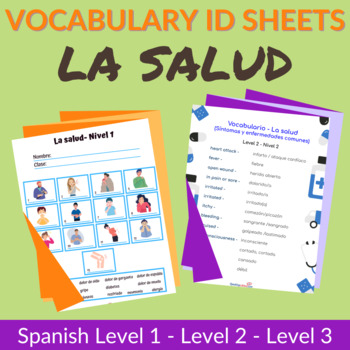 Health in Spanish: Vocabulary ID Sheets and Lists by Level (Spanish 1, Spanish 2, and Spanish 3) – A Teacher’s Vocabulary Master List that includes all the links to “make copies” to your Google Drive of the Student Vocabulary List Handouts and Student Practice Worksheets.
Health in Spanish: Vocabulary ID Sheets and Lists by Level (Spanish 1, Spanish 2, and Spanish 3) – A Teacher’s Vocabulary Master List that includes all the links to “make copies” to your Google Drive of the Student Vocabulary List Handouts and Student Practice Worksheets.
All lists and worksheets were created in Google Slides (compatible with PowerPoint) and are fully editable. For example, you will be able to remove the word bank for upper-level students or add/remove vocabulary words from the lists.
In this reading comprehension activity, students read about how the concept of beauty is changing in Argentina and how Venezuelan immigration has influenced this change.
- Novice students read a text published in an Argentinian newspaper, learn vocabulary in context and use visual content to learn body parts vocabulary.
- Intermediate Low/Mid students also answer questions in Spanish.
- Intermediate High/Advanced students read the complete article and answer questions, and then prepare a presentation where they compare different cultures.
6 Spanish Songs to Practice Body Parts and Health Vocabulary
- Hokey Pokey in Spanish Cloze Activity
- Despacito by Luis Fonsi ft Daddy Yankee : Direct and Indirect Object Pronouns and Body Parts Cloze Activity
- Mis ojos by Mana Activities
- Ni una sola palabra by Paulina Rubio – Present Tense
- La bilirrubina by Juan Luis Guerra – Spanish Song to Introduce Health Vocabulary
- Es por ti by Juanes – Present Tense, Vocabulary: Body Parts
